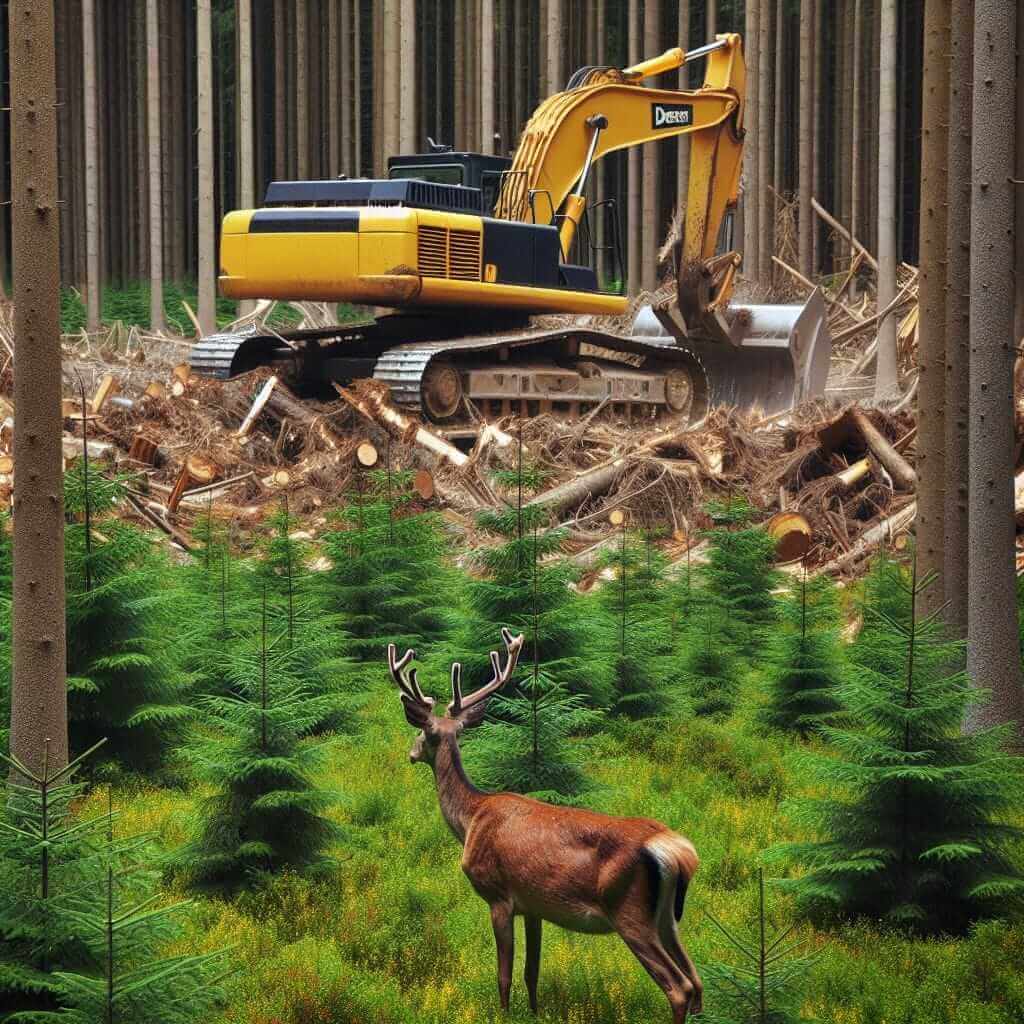The relentless march of urbanization has had a profound impact on our planet’s delicate ecosystems, particularly on wildlife. This essay will delve into the multifaceted effects of urban development on wildlife, exploring both the challenges and potential solutions to mitigate the negative consequences. This topic frequently appears in the IELTS Writing Task 2, often under the “environment” or “society” categories.
Here are a few examples of how this topic might be presented in the IELTS exam:
- “Urban development is often seen as necessary for economic growth, but it can have negative consequences for wildlife. Discuss the impacts of urban development on wildlife and suggest some solutions to this problem.”
- “The increasing encroachment of human settlements on natural habitats is a major threat to biodiversity. To what extent do you agree or disagree with this statement? Give reasons for your answer and include any relevant examples from your own knowledge or experience.”
- “Some people argue that the best way to protect wildlife is to create more national parks and nature reserves. Others believe that it is more important to focus on making cities more wildlife-friendly. Discuss both views and give your opinion.”
Sample Essay: Urban Development and Wildlife
Analysing the Task
Let’s break down the first task:
- Type: This is a classic “problem-solution” essay. You need to explain the negative impacts of urban development on wildlife and offer solutions.
- Keywords: “Urban development”, “economic growth”, “negative consequences”, “wildlife”, “solutions”
- Focus: The essay requires a balanced discussion, acknowledging the economic benefits of urbanization while highlighting its detrimental effects on wildlife.
Model Essay
Urban development, while essential for economic growth and human progress, often comes at the expense of the natural world. The encroachment of cities upon wilderness areas has profound and often devastating effects on wildlife, leading to habitat loss, fragmentation, and increased human-wildlife conflict. However, by adopting sustainable urban planning strategies, it is possible to mitigate these negative impacts and create cities that exist in harmony with nature.
One of the most significant consequences of urban sprawl is habitat loss. As cities expand, they consume vast tracts of forests, grasslands, and wetlands, destroying the homes of countless species. This loss of habitat forces animals into smaller and more isolated populations, making them more vulnerable to disease, inbreeding, and ultimately, extinction. For instance, the rapid urbanization in Southeast Asia has decimated the natural habitat of the orangutan, pushing this iconic primate to the brink of extinction.
Furthermore, urban development often fragments natural habitats, dividing once contiguous areas into smaller, disconnected patches. This fragmentation isolates wildlife populations, hindering their ability to migrate, find mates, and access resources. Roads, fences, and other infrastructure act as barriers, preventing animals from moving freely and increasing the risk of collisions with vehicles. Such habitat fragmentation has had a particularly detrimental effect on large carnivores like wolves and bears, which require extensive home ranges to survive.

To address these challenges, urban planners and policymakers must prioritize sustainable development practices that minimize the impact on wildlife. Green infrastructure, such as parks, green roofs, and wildlife corridors, can help connect fragmented habitats and provide essential refuge for urban wildlife. For example, the creation of wildlife overpasses and underpasses in Banff National Park, Canada, has significantly reduced wildlife-vehicle collisions and allowed animals to move more freely across the landscape.
Moreover, promoting responsible waste management and reducing pollution are crucial for protecting wildlife in urban areas. Pollution from factories, vehicles, and households can contaminate water sources, degrade air quality, and harm wildlife populations. By implementing stricter environmental regulations and investing in renewable energy sources, cities can create healthier environments for both humans and wildlife.
In conclusion, while urban development poses significant challenges to wildlife, it is not an insurmountable problem. By embracing sustainable urban planning practices, mitigating habitat fragmentation, and reducing pollution, we can create cities that support both human progress and the flourishing of wildlife. (Word count: 389)
Key Takeaways:
- Vocabulary: Use specific vocabulary related to urban development and its impact on wildlife, like “urban sprawl,” “habitat fragmentation,” “green infrastructure,” and “wildlife corridors.”
- Structure: Follow a clear structure, starting with an introduction that presents the issue, body paragraphs that discuss the problems and solutions, and a conclusion that summarizes your main points.
- Grammar: Pay attention to using complex sentence structures and a variety of grammatical forms to demonstrate your language proficiency.
Essential Vocabulary:
- Urban sprawl (n.): /ˈɜːrbən sprɔːl/ – The uncontrolled expansion of urban areas.
- Habitat fragmentation (n.): /ˈhæbɪtæt ˌfræɡmənˈteɪʃən/ – The process of breaking up large, contiguous habitats into smaller, isolated patches.
- Wildlife corridor (n.): /ˈwaɪldlaɪf ˈkɔːrɪdɔːr/ – A strip of natural habitat connecting fragmented areas, allowing wildlife to move between them.
- Green infrastructure (n.): /ɡriːn ˈɪnfrəˌstrʌktʃər/ – A network of natural and semi-natural areas designed to deliver ecosystem services, such as stormwater management and wildlife habitat.
- Mitigate (v.): /ˈmɪtɪɡeɪt/ – To reduce the severity or seriousness of something.
- Encroachment (n.): /ɪnˈkroʊtʃmənt/ – Intrusion on a person’s territory, rights, etc.
- Contiguous (adj.): /kənˈtɪɡjuəs/ – Sharing a common border; touching.
- Degrade (v.): /dɪˈɡreɪd/ – To lower in quality.
- Flourishing (n.): /ˈflʌrɪʃɪŋ/ – A state of growth and prosperity.
- Insurmountable (adj.): /ˌɪnsərˈmaʊntəbl/ – Too great to be overcome.
Conclusion
Understanding the impact of urban development on wildlife is crucial for IELTS Writing Task 2. Remember to use topic-specific vocabulary, maintain a clear structure, and provide relevant examples to support your arguments. With practice and careful consideration of the issues involved, you can achieve a high score in this section of the IELTS exam. Consider practicing writing essays on similar themes, such as the effects of climate change, deforestation, or pollution on the natural world.